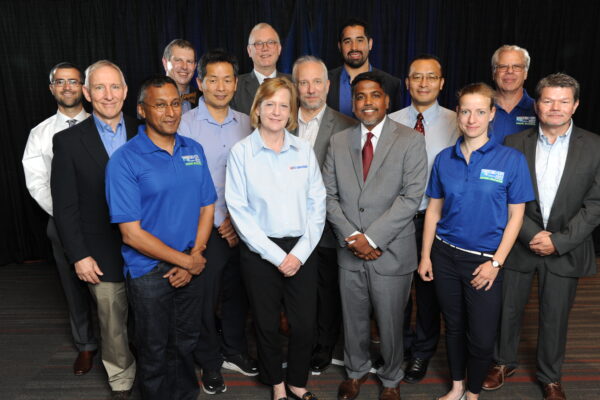
Distinguished Lecturer
Dr. Robert Kebel
Distinguished Lecturer

Dr. Robert Kebel
Term 2022-2023
Dr. Kebel works for Airbus in Hamburg, Germany since 2001 where he directs the aircraft wing integration, ensures lightning protection for aircraft, and oversees EMC and lightning protection. Prior to Airbus, Dr. Kebel worked for EADS Germany’s military aircraft section where his responsibilities were in the field of signature technology. After receiving his diploma in electrical engineering from Hanover University in 1995, Robert joined the research group of Professor Heyno Garbe at the University’s Institute for Basic Electromagnetics and Measurement Technology where he was a research assistant. In 1996, Dr. Kebel became a research assistant and was employed by the German Armed Forces University in Hamburg, now Helmut-Schmidt University Hamburg.
Dr. Kebel received his Ph.D. in 1999. He is the author of numerous publications in the field of electromagnetic compatibility and lightning protection.
Talk 1: Conducted EMI of an Inverter-Driven Electric Power Train
Due to the electrification in mobility applications, electric (high) power trains become an increasingly important subject of investigating EMI. This talk provides an overview about the systematic root cause of electromagnetic conducted emissions of a power train. Direct current (DC) power sources such as batteries or fuel cells provide the energy for propulsion. Alternating current (AC) electric engines drive the vehicle, because AC engines have advantages in maintenance and reliability. Pulse-width modulating (PWM) inverters convert DC into AC voltages. PWM technology can lead to significant electromagnetic interference (EMI) issues pending e.g. on power level and more electric parameters, which should be chosen early for mitigating the EMI risk. A simple predictive simulation model supports making integration decisions in view of the EMI risk.
Typical power levels for smaller aircraft power trains start at 100 kW; levels up to some 10 MW are necessary for the propulsion of large transport aircraft. Fast switching inverters converting high power levels imply a high dV/dt and a significant EMI potential in common mode (CM). This talk will also show how the choice of the inverter and the choice of the power system (IT versus TN network) limits or exacerbates interference. Crosstalk to wiring looms routed adjacently to power train AC cables will further illustrate the effects and provide options for an optimization of a power train from an EMI point of view.
Talk 2: Optimization of Shielding in an Aircraft Wing – Focus on Lightning Induced Effects
A raceway eases the wire bundle installation and bundle maintenance significantly compared to an over shielded bundle solution, also the raceway provides multiple electric functions where a major function is the lightning induced effects protection. For the aircraft wing, a raceway approach is investigated. The aim is to predict the transfer function for lightning induced effects and to anticipate the optimum design. The technology is well known from various aircraft installations and the integration has been based on testing and measurements. A simple reapplication of previously set requirements does not account for the increased use of composite material and resulting differences in lightning current paths.
Also today, numerical tools enable a visibility of the electromagnetic effects prior to hardware availability. However, their use also has constraints, which need to be considered. Single methods such as only FDTD or only method of moments may result into a limited flexibility or significant modelling effort as the size of a model creates some workload and time constraint when just a model detail is being changed during the development process. A FDTD cell size of 10 cm for example will be satisfactory to analyze the lightning current path, but it will not allow judging the performance of a particular raceway with dimensions of just a few centimeters cross section in the same size FDTD model. A simulation technique is needed that allows modelling of small details as well as large sections.
As previously shown, the position of wire routings, raceways or even wires in raceways have a significant influence on the needed protection performance. Geometry of the wing structure is another parameter as well as the design of the raceways and its fastening brackets. This presentation outlines how small details of a model as well as the overall size of an aircraft section can be combined with the help of a dedicated analytic transfer impedance model. How improvements and potential mitigations may be anticipated will be reviewed. The impact of a transient lightning strike can be anticipated while directly giving conclusions for improvement potential and optimum design.




















